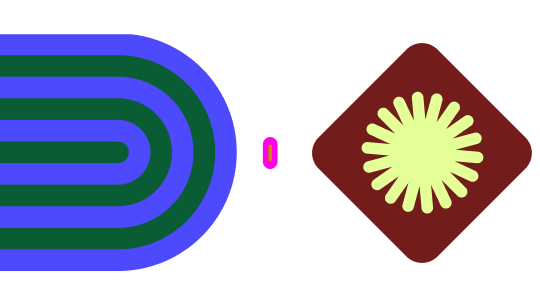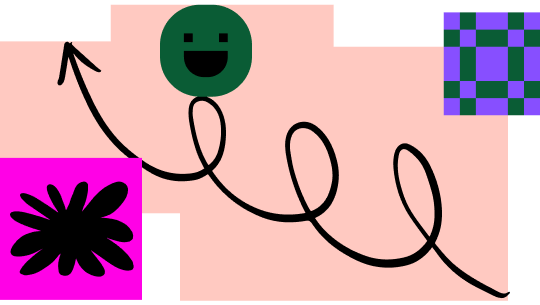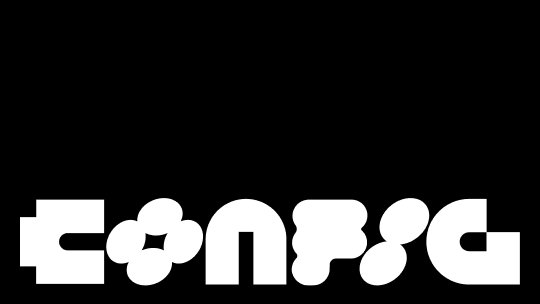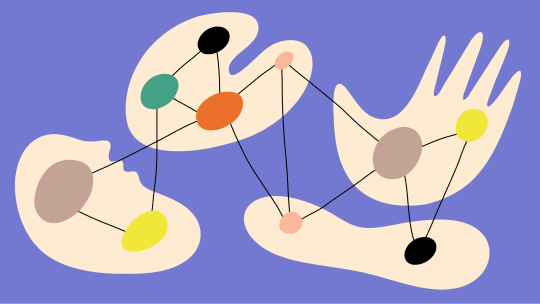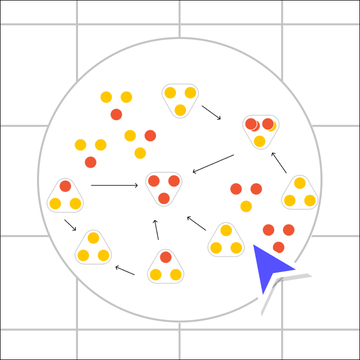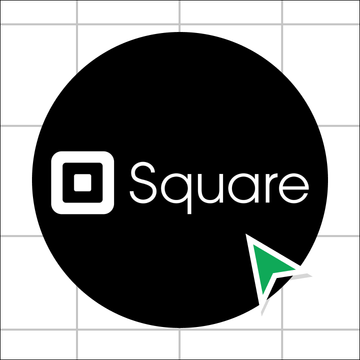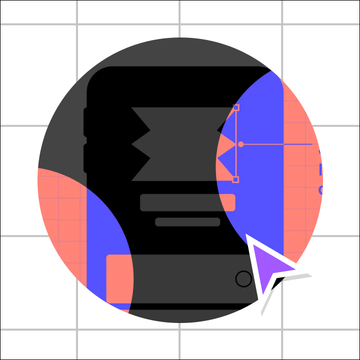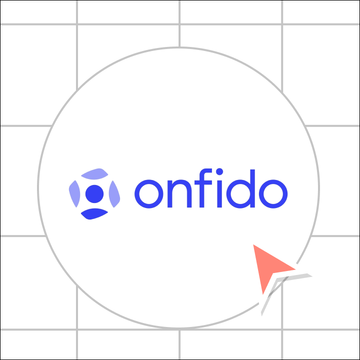Figma is a game changer for renowned design studio Moving Brands
Moving Brands is a global independent design studio, busy working with a host of high-profile clients. You know the Netflix logo? They’re the ones who designed it. They gave the BBC’s weather app its gorgeous look and feel. And they created a new brand identity, logo and 10-year vision for HP.
Collaboration and communication are a creative company’s lifeblood and areas that Moving Brands has always prided itself on. Nonetheless, done at scale and speed, and across various platforms and channels, things can sometimes get messy.
Collaboration. Versioning. Productivity. Many things can suffer. And one of the biggest challenges is keeping everyone up-to-date across different platforms - email, Slack, Zoom, Dropbox Paper, Box, Google Drive, to name a few.
However, in 2022, Moving Brands's team discovered and rolled out Figma and FigJam across their entire organization. They’ve never looked back – and here’s why.
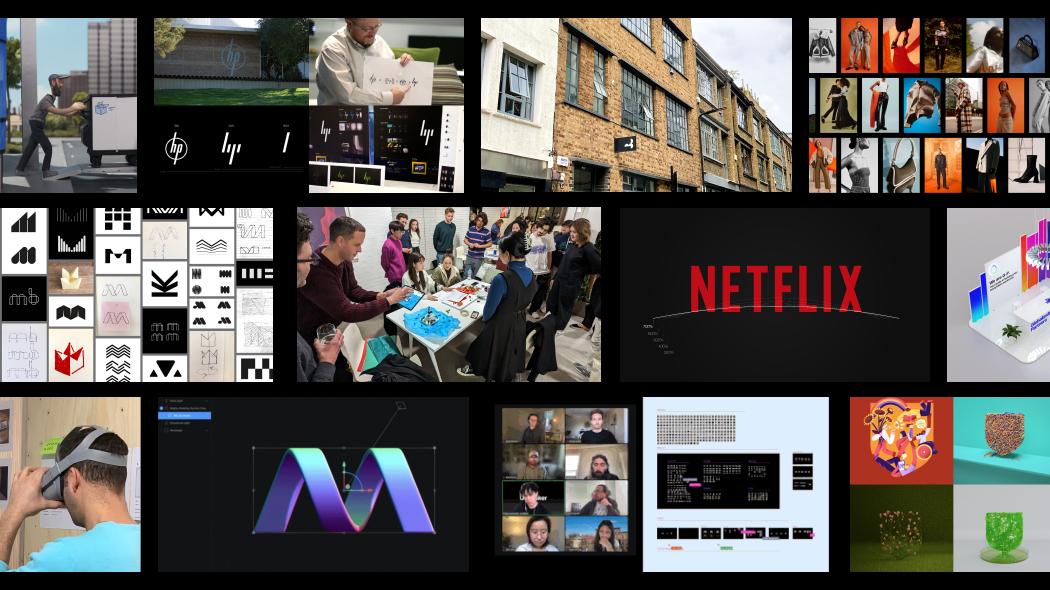
The challenges of working at the top of your game
Moving Brands has team members across multiple locations including London, New York, San Francisco, Los Angeles and Zurich, with clients including Samsung, Apple, BBC, Google, HP, IBM, Meta, Netflix and the UN. Big on diversity, the workforce comprises over 18 nationalities, with representation at all levels and 50% female directors and female leadership.
Their specialist expertise includes brand strategy and identity, digital products and services, film and animation, and immersive experiences. The majority of these services are design-centric, which is why the agency has a global design team of 60+ creatives. And expectations are high - designers need to produce top-quality outputs to tight deadlines, be flexible and adaptive to clients’ needs.
UX Director Sahin Gumus is responsible for leading digital projects, and has a highly collaborative role, working with researchers, UX & UI designers, visual designers, creative technologists, external developers and project managers to conceptualize, design, prototype and implement digital products and services.
As a result, he has been at the sharp end of the company’s collaboration and communication pain points. Things like version keeping, transferring files and assets, finding what you need, and having one source of truth for a project status. Working with the project management team to get this right can boost productivity, improve team and stakeholder alignment, save time, and fast track projects.
And an upgrade from Figma Professional to Figma Organization has helped them get to where they wanted to be.
Finding efficiencies with Figma and FigJam
“The moment we convinced people of the benefit of Figma,” says Sahin, “was when a group of non-designers asked how to build a new landing page. We quickly showed them our component-based system in Figma, and how to drag different components and put things into place. The looks on their faces: they got it immediately.”
From there, people across the business quickly got on board. The agency started by setting out a clear structure to manage new projects in Figma in collaboration with different teams.
After holding an internal Figma Masterclass to introduce Figma and FigJam to everyone at Moving Brands, the products were then rolled out across the global organisation, so designers and non-designers could use it across each stage of their processes, most notably:
- Discovery, ideation and co-creation workshops
- Design iteration and feedback capture
- Client presentations
- Guidelines and design system creation
- Prototyping and developer dialogue
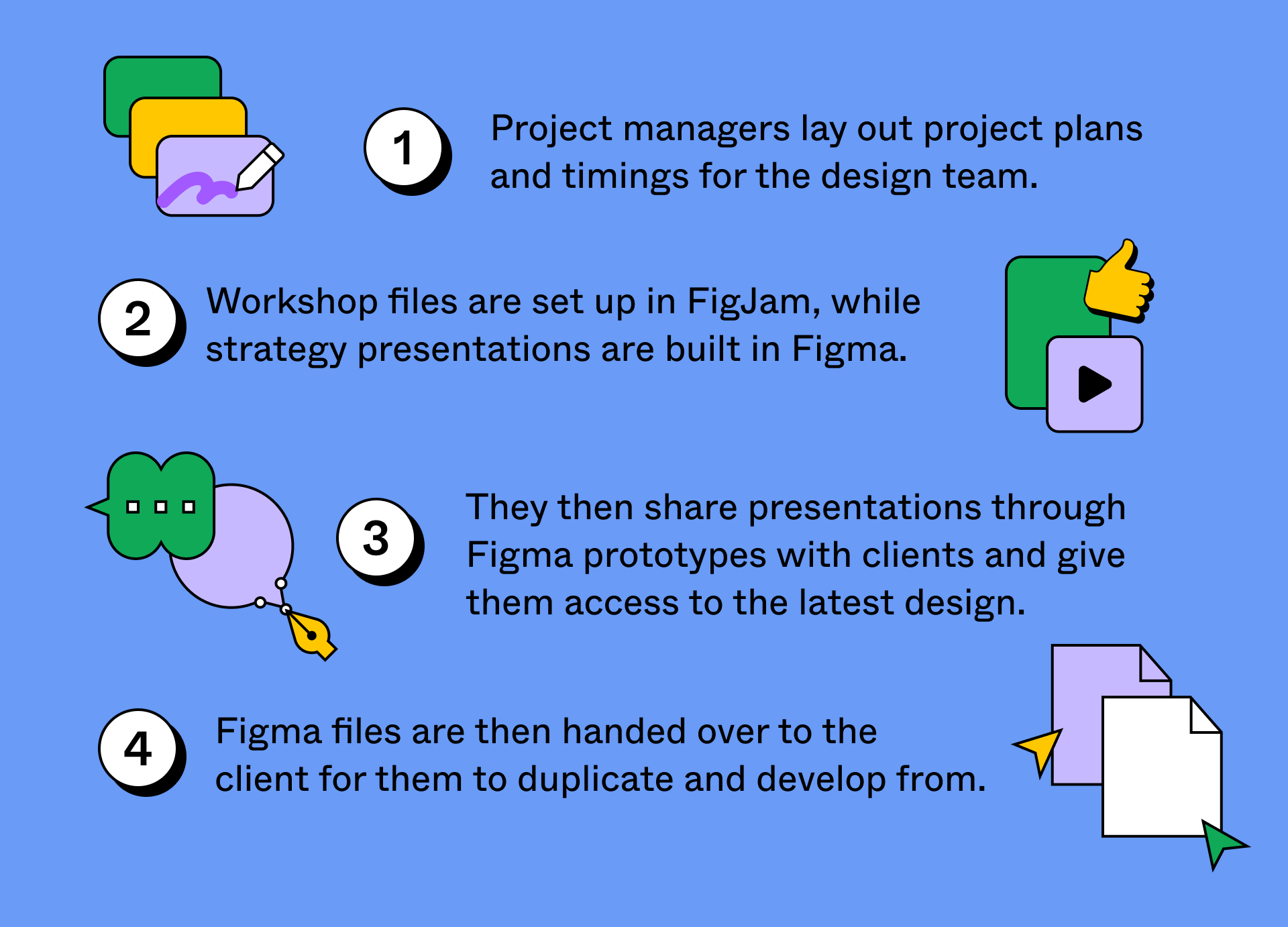
They also introduced FigJam for the brand design and project management teams to brainstorm and plan. And FigJam plus Figma were used for internal creative activities to develop company culture. One example is their biweekly Creative WIP sessions, where their global creatives come together on Figma for idea generation and real-time sketching. Another example is Digital Minds, an informal session where they share the latest developments, tools and best examples happening in the digital space on FigJam.
“As designers, we need to build the bridge between technological innovation and human interactions. Therefore, our thinking and process has to constantly evolve which requires our team and our tools to be extremely flexible,” says Interaction Designer, Noemi Roser.
Collaboration and communication
Moving to Figma has enabled Moving Brands to progress their digital transformation, overcome some big challenges, and supercharge their internal and external workflows, says Sahin, and many core processes have improved.
“Figma allows multiple designers to work on the same project simultaneously and has improved the collaboration across locations in which the company operates,” says Design Director, Joel Smith. “It also eliminates the confusion and stress caused by design versioning and history.”
The agency found that the biggest benefit is that it reduces time spent in traditional communication, and this has accelerated projects. Previously, the agency sent numerous project and progress reports. Now it’s all in Figma, clients and team members can jump in and out whenever they want. “Figma helps us spend less time following up across different channels. For our studios, this is massive,” says Sahin.
Secondly, Figma enables teams to present concepts to stakeholders and clients in real-time. “Using features like presentation mode, interactive prototypes and live embeds, we can showcase our work effectively, and gather feedback instantly,” says Sahin. “Figma gives us instant comms and instant comments, which means we can iterate in real time,” he adds.
Thirdly, creating libraries including design assets, UI elements, and components now helps the agency to maintain consistency across different projects and enable faster iteration.
“Figma isn’t a static tool, it’s an open ecosystem for creativity constantly being updated with new plug-ins and capabilities. Its robustness comes from being open to daily improvement through other partners' innovation,” says Head of Creative for Europe, Hector Pottie.

More time for brilliant design
For Moving Brands, Figma has brought tangible outcomes right across the board.
With an enhanced design workflow and culture, people spend less time on file management and versioning, and have more time for design and high-quality deliverables.
“In my 30-year career I’ve always been a fan of embracing and using new technologies. Learning new tools is fundamentally how we evolve not only as an industry, but also as a species. Figma is a genuine game changer, a seismic shift in how we work together, in teams, across disciplines, and with our clients,” says Hector.
The Total Economic Impact of Figma
This Forrester report shows how teams are using Figma and FigJam to speed up their workflows, consolidate their design stack, and build better products.
See how Figma can help you scale design
Great design has the potential to differentiate your product and brand. But nothing great is made alone. Figma brings product teams together in a fast and more inclusive design workflow.
Get in touch to learn more about how Figma can help companies scale design.
We’ll cover how Figma can help:
- Bring every step of the design process—from ideation, to creation, to building designs—into one place
- Accelerate design workflows with shared company-wide design systems
- Foster inclusivity in the product team process with products that are web-based, accessible, and easy to use
